It wouldn't have been appropriate to provide a solution while the Cybertron contest was still in progress. However, now that it has ended, we can discuss the methodology for solving challenges like this.
So, when we come across three encoded strings, two of which are short and one is larger, in a cybersecurity competition where the challenges are likely related to cryptography, it is possible that these strings correspond to the initialization vector (IV), key, and ciphertext, used in a cryptographic algorithm.
There are many encryption algorithms that use IV and key to decrypt an encrypted message, and some of the more common ones are: AES, Blowfish and DES. However, as there is no indication of which encryption algorithm the author of the challenge used, we will need to try out all the available algorithms, with the hope that the correct one won't be the last we try. In order to speed up the trial process, we can use a tool like CyberChef, which can save us a lot of time.
In this case, for our first and only trial, since @topaco has already determined that AES is the encryption algorithm used by the challenge author, we will use CyberChef's AES decryption operation, as shown below:

Notes:
- This operation accepts Key and IV in base64 format so we don't even need to decode them manually.
- This operation accepts the input (ciphertext) in hexadecimal format, so we manually converted it from base64 to hex.
- CBC mode is the mode where each block of plaintext is XORed with the previous ciphertext block before being encrypted, creating ciphertext blocks that depend on all plaintext blocks processed up to that point, and requiring an initialization vector to be used in the first block to ensure message uniqueness.
 Incidentally, it was both the first available mode in the list and the correct one, otherwise, we would have had to try the other modes as well.
Incidentally, it was both the first available mode in the list and the correct one, otherwise, we would have had to try the other modes as well.
And as Stack Overflow primarily focuses on programming and not on solving challenges or using tools, here is a Python implementation for your reference:
import base64
from cryptography.hazmat.primitives.ciphers import Cipher, algorithms, modes
from cryptography.hazmat.primitives import padding
# Base64 encoded IV, key, and ciphertext
base64_encoded_iv = 'ZuwbhdMNQDddJEi4DI/w8A=='
base64_encoded_key = '5RdUneHRRHl+YWAeXlwHZg=='
base64_encoded_ciphertext = 'pve6H1uvrdoPgXLjD83FhzD300SSA09eEqDgSPfToJB2JKdQt3Xhxgrha5uv97SFEdncwK0nx6T/WIc8Zitkjwnibah5ORGk5ofzWV9l43N0csZx16KLKDh21xmjN/5ff0lvAjcwCaD9zgencQNUscpuu2Cn5H3BspzlMGdNjXjEEneMNkRY37Y6HcXlQMiXZAzlLtyDYRiMraA8hnKxvwDGMz0ohhMfuvCwek1/wgrWUG/OmBzKY/AoZrG6mqrCVz9KteHaRdoLf7Dc2irV2zR/4HVZBctOP9Ffq7GTBho8QdWVpGIhC23xcpXdPGQGApiv/6wJSXmsct79BcERqzTvUuDEEbieZoc9aCXCWgsnZgOMo3ncuMVB65qB9gycEl5G1mDQZ2paNDbHz+8NWzThUjkcEtLhGmocf4/wsLI='
# Decodes Base64 encoded values
iv = base64.b64decode(base64_encoded_iv)
key = base64.b64decode(base64_encoded_key)
ciphertext = base64.b64decode(base64_encoded_ciphertext)
# Creates an AES cipher with the decoded key and IV, using CBC mode
cipher = Cipher(algorithms.AES(key), modes.CBC(iv))
# Creates a decryptor object using the AES cipher
decryptor = cipher.decryptor()
# Decrypts the ciphertext using the decryptor object and finalizes the decryption process
plaintext = decryptor.update(ciphertext) + decryptor.finalize()
# Creates a PKCS7 padding object with block size of 128 bits for unpadding the plaintext
padder = padding.PKCS7(128).unpadder()
# Removes the padding from the decrypted plaintext using the PKCS7 padding object and finalizes the unpadding process
plaintext = padder.update(plaintext) + padder.finalize()
# Decodes the plaintext from bytes to UTF-8 string
plaintext = plaintext.decode('utf-8')
# Print the decrypted plaintext
print(plaintext)
Notes:
- The
128 in the PKCS7 padding object refers to the fixed block size of AES, which is 128 bits (16 bytes), and should not be confused with the key size used in the encryption process.

